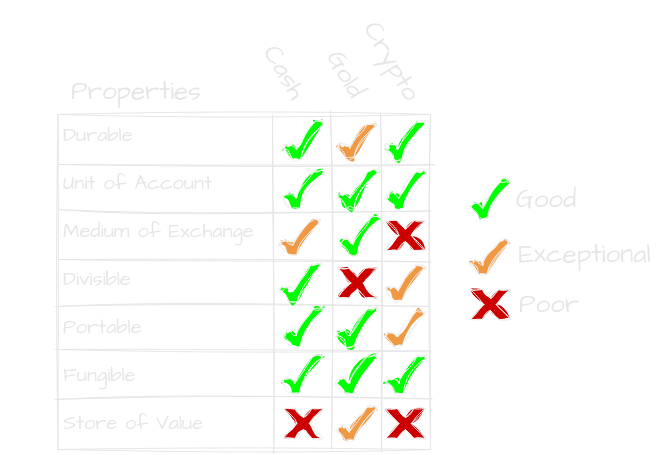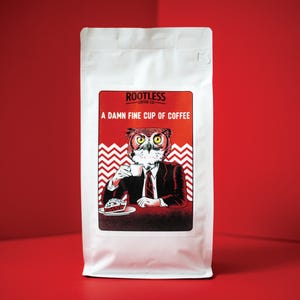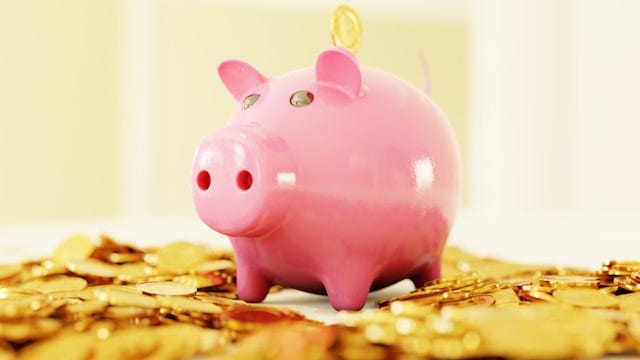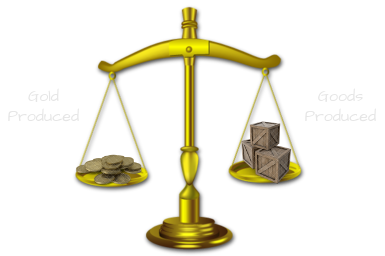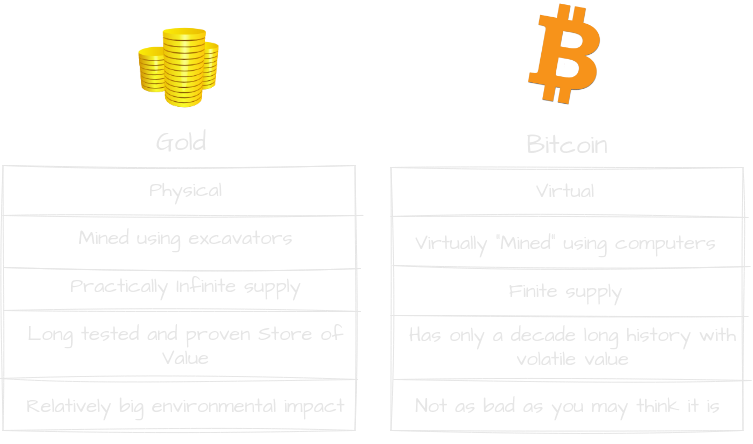9th September 2024
Updated on 13th September 2024 - Added a retraction regarding Bitcoins environmental impact.
Introduction: The Liberland Dollar
I have been reading about Liberlands development of their own crypto currency called LLD = LiberLand Dollar. While I’m usually skeptical to government issued money, this one is an exception.
While you can (or you should) read the details for yourself, here are some quick facts about the LLD:
While the LLD is intended for exchange of goods and services, there is no official legal tender in Liberland. You are free to use any medium of exchange you want.
Initial supply of LLD is 3,000,000 with a maximum of 10% annual inflation. The inflation rate can be adjusted by the government, but it can’t be higher than 10%.
Like BTC and HBAR, it has a maximum supply of tokens. LLD Maximum supply is 70,000,000. They acknowledge that this is deflationary in the long run.
Only citizens of Liberland are allowed to run validators. There is however no restrictions that only apply to the government.
The founder of Liberland is a Liberty and Blockchain enthusiast. It’s going to be interesting to follow the development of their young country. I am myself currently an E-residence of Liberland.
Regardless if their currency is going to work or not, it sparked some philosophical questions for me about what an optimal decentralized currency should be.
Crypto Currencies VS Gold
I re-watched Hidden Secrets of Money Part 1 where Mike explains what he means is the difference between Money and Currency. I don’t know if there is an official definition of money, but for the sake of argument, let’s agree that true money has to be a store of value. Here is a table of proprieties where I do my own comparison of Cash (fiat currency), Gold and Crypto Currencies (In general, no one specifically).
Note: Why should you listen to me for economic advise? You probably shouldn’t, but I have read a few books on the subject and I have a fairly good grasp on technology. I don’t claim to have all the answers, I’m just sharing my opinion.
Durability
While all of them are durable, gold is exceptional since it is a base element that will never be destroyed. We use the same gold as the Egyptians did 5000 years ago.
Cash are somewhat fragile but can be reprinted if worn out.
Depending on the Crypto Currency in question and what underlying infrastructure it uses, it has the possibility of being very durable. But you can’t access your assets if you are offline from the Internet.
Unit of Account
The unit of account is the number that represents the value of the currency. For example “1 Dollar”, “1 Ounce” or “1 BTC”.
Medium of Exchange
One of the most important property of any currency is that somebody is willing to accept it as payment for goods and services, and in return can use it for other goods and services. At the moment, cash is right now the most accepted currency in the world. But that won’t last forever.
Gold and silver have been used for millenniums as a medium of exchange. While in periods government issued currency have been used, gold as a medium of exchange always comes back when everything else fails.
In general, crypto currencies have mostly been perceived as some kind of stock that you can invest in. That was never the point but the market value of crypto currencies are too volatile to be used as a medium of exchange. Nobody wants to trade their fiat into crypto, only to risk getting half of the purchasing power next month. The exceptions are stable coins, which for now is the best option to trade with. But they are not true crypto currencies, only cash in disguise.
Some people may see this as an utter failure of DeFi. While I somewhat sympathize with that point of view, I’m still optimistic that we will eventually find out how to make a decentralized currency that people can use as a reliable medium of exchange. The potentials of a decentralized digital currency is too valuable to give up on.
Divisibility
Divisibility is how many fractions you can divide your unit of account into.
Cash is pretty divisible. You can divide a dollar into 100 cents, which for the most part, even back in the 50’s before inflation was so bad, could purchase the smallest valued items in a store. When hyperinflation hits, that will be even less of a problem.
Gold, while still somewhat divisible, you cannot purchase a cup of coffee with it. Not even with 1 gram only, unless it’s a damn fine cup of coffee.
Crypto currencies however, is virtually infinitely divisible. You can basically add how many fractions you like. That opens up totally new use-cases. Take a look at Hedera how they charge the worth of a thousand of a dollar for their transaction fee. You can’t charge anyone $0,001 with cash, even in it’s digital form!
Portability
Gold is quite portable. One kilogram gold bar is worth around ~$80,000. The same amount of cash might fit in a briefcase. This works fine as long as you only deal with the local business. However, today we do international trade everywhere. While we could send gold with a courier, it’s expensive, risky and inconvenient.
Cash in it’s digital form is much better suited for long distance trading, but can still be a hassle when dealing with bank transfers, dealing with expensive fees and many days delay, especially when it’s close to a weekend. You are also in the mercy of the banks that will decide if they are going to let you exchange with your current business partner or not.
With Crypto currencies, as long as you have access to the Internet, you can carry around a virtually unlimited amount of currency in your pocket. You can also trade with whoever, whenever, from wherever in the world, and the transactions can take seconds, instead of days or weeks, without any third parties in between. Crypto currencies represents ultimate economic freedom.
Fungible
Fungible means that the unit of account has the same worth anywhere in the world. For example 1 dollar, bitcoin or ounce of gold has the same value in USA, Europe or Asia.
Store of Value
Money represents your two most important assets: Your time and your freedom. Money is a way to store the value of your used time and freedom, so you can spend it later, when needed.
Currency by it’s word means that it should flow through a system and is not meant to be stored in a vault somewhere. For currency to become money, it has to be able to store it’s value over a long period of time.
Due to uncontrolled inflation, you are loosing purchasing power each day you keep cash in your bank account or wallet. Worse yet: Every single fiat currency in the history of mankind have eventually returned to its intrinsic value of 0. Do you think the dollar, which is the backbone for all other international fiat currencies in the world, will be the first to succeed?
Crypto currencies have had the opposite problem. Either they have gone to 0, or it’s value have increased to unrealistic proportions. It’s has been extremely volatile in both directions. I believe this is a growing pain of a rising market where we try to find the a realistic value of crypto currencies.
Gold have the benefit of having a 5000 year long track record of being the safest store of value in history. While that is no guarantee that gold will still be a store of value for the next 5000 years, it’s still deemed the safest alternative by many experts. In ancient Rome you could buy a Toga, belt and a pair of sandals for 1 Oz of gold. Today, you can buy a fine tuxedo, belt and shoes for 1 Oz of gold.
What makes gold special?
How comes that gold has managed to become the best store of value through the history? In my mind, for a currency to be a worthy medium of exchange, it needs to have some sort of intrinsic value. From Investopedia:
“Intrinsic value refers to a fundamental, objective value contained in an object, asset, or financial contract.”
Food and shelter is the two most basic assets with intrinsic value. They will always have a value in themselves. The perceived value may go up or down, depending on the supply and demand for those assets.
Cash does not hold any intrinsic value other than the piece of paper. It is only backed by faith in governments.
What is interesting is that Gold, until the last century, had no intrinsic value either. You could not eat it, make weapons of it or do anything practical. Only the last century it has gotten some practical utility in electronics, but that is only a small percentage of the total demand for gold. My conclusion is that an intrinsic value might not be required for a medium of exchange to work.
For a successful store of value, I believe these requirements needs to be met:
It has to be a limited quantity;
it cannot be controlled by a single entity;
it can’t just be arbitrarily issued;
an intrinsic value might not be necessary, but it sure wouldn’t hurt;
and it has to follow the rules of the free market.
Silver has also been used as a medium of exchange, but has been more volatile than gold. Neither can it be too rare that the price for it will go up to much. That will cause incentives for people to hoard it, rather than spending it. It has to be a balance. That’s why I believe that having a static supply of a currency might be a bad idea. A little deflation may be controllable, but extreme deflation makes it unfit for a store of value.
So how has gold managed to keep a balanced value over Millennia? It is rare, and takes energy to mine it. If the demand of gold is low, it looses value and it’s not worth the miners effort anymore, so they decrease the mining and inflation shrinks. If the demand for gold is higher than what the miners are capable of producing, the price increases until demand is met. It’s the work of the invisible hand of the free market.
Note: On gold.org I found these graphs that show how supply and demand of gold co-relates. Even though supply and demand is almost in balance, the price of gold increases every year. That is evidence of gold not actually being in more demand, but the currency loosing it’s value.
As long as demand for new goods and services increases, the production of gold will also increase to balance the market. That is why gold has such a low volatility. In the unlikely event of being no more gold to mine, the gold price would skyrocket. Then people will start to hoard it, rather than using it. It may come to a point were people starting to consider a different store of value due to the gold-price being too inflated.
The Digital gold
Bitcoin has been referenced as digital gold. In some regards it is similar, in others it’s not.
Physical VS Virtual
Let’s start with the benefits of physical gold:
Gold can be used in jewelry or electronics, giving it some intrinsic value beyond just being a store of value.
Gold is always available, even when you loose contact to the Internet.
It’s just feels good to hold and look at. It’s similar how vinyl sounds better than an mp3 file.
The Virtual bitcoins also have benefits:
It’s harder to steal. Governments can’t just come home and seize your bitcoins, if you store them correctly.
It has less environmental impact, something I will address later.
The fact that nobody can break into a vault and steal bitcoins by force is a huge benefit over gold. That means that keeping your bitcoins secure is much less costly than keeping your gold secure.
If we can just train ourselves to appreciate something that only exists in a somewhat metaphysical sense, we could benefit much by it.
Store of value, mining and supply
There is nobody denying that gold has been the best Store of Value ever invented, but will that always be true? How did gold fair for it’s first decade as a medium of exchange? Let’s give Bitcoin some benefit of a doubt that it may be able to become a stable currency in the future, it still has some challenges to overcome.
Bitcoin is similar in the way that you have to spend time and energy to produce a coin. Back in the early days, the barrier to entry was much lower. Anybody with a decent gaming PC could mine for bitcoins. Now you need specialized hardware to mine for bitcoins, consuming a lot of electricity.
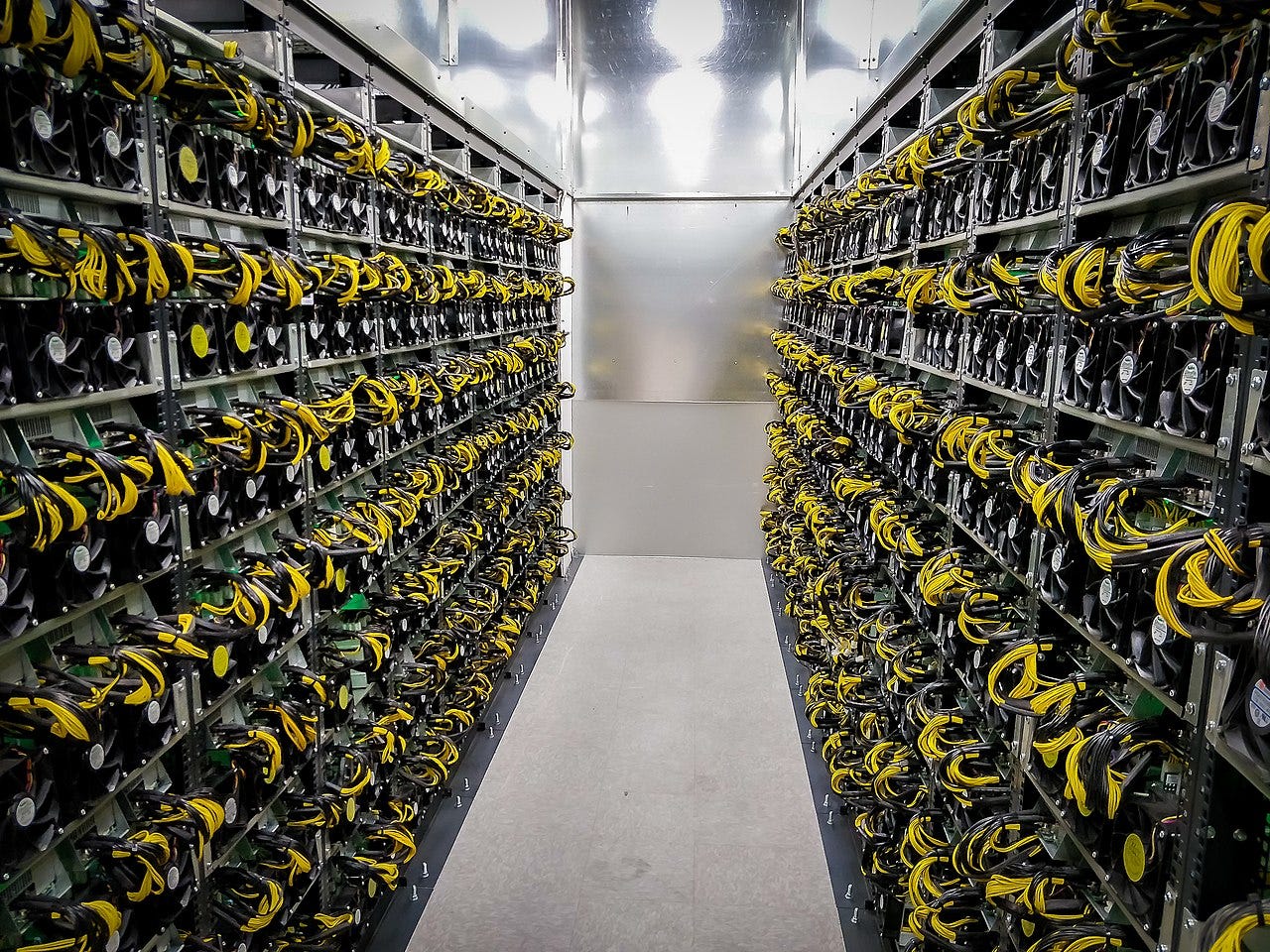
Bitcoin has a finite supply of ~21 million coins. Each 4th year there is a halving event that decreases the miners reward by half. Last halving event was in April 2024 and the current reward for breaking a new block is 3.125 bitcoins. The last bitcoin is expected to be mined around year 2140.
Source: https://www.investopedia.com/tech/what-determines-value-1-bitcoin/
This makes bitcoin deflationary; The supply will decrease while the demand is increasing. This is therefore not a store of value, but an speculative investment. However, due to an increase of available altcoins on the market, the price of bitcoin might not skyrocket as it has before, lowering the deflation rate.
But the value of bitcoin has to increase every year, otherwise validators will loose incentive to mine more bitcoins. According to University of Cambridge, the estimated cost to produce one bitcoin is ~$42,500. To low bitcoin price will lead to either a collapse of the whole infrastructure, or all the remaining validators will end up in a central location with cheap electricity. Then one government may end up with the total control. Either way, it’s not good.
Even if the market price for bitcoin is adequate for validators to run, there is still the challenge of more demand = more transactions = more risk of forking = even more expensive computers, maintenance costs and slower network transactions. However, some of those challenges can be overcome with Layer 2 solutions or by using wrapped bitcoins.
Gold on the other hand: Even though it’s rare, there is still a practically infinite amount of gold to mine. But that has always been true and hasn’t affected it’s value; because you still have dig it up from the ground. I already described how supply and demand for gold is affected by other goods and services so I’m not explaining it again.
Environmental Impact
Bitcoin environmental impact
Bitcoin has gotten into a bit of a controversy due to it’s high maintenance cost. Even though I’m not exactly a Bitcoin evangelist, I feel that this criticism is more about pushing an agenda, than environmental concerns.
Bitcoins total electricity consumption is enough to power Norway, on about 146TWh annualy. It doesn’t make a whole lot of sense to me, that you have to spend huge amounts of computing power to maintain a ledger that only do 7 transaction per second, while other ledgers like Hedera can make 10,000 TPS with only a fraction of the maintenance cost. But since this virtual mining process requires time and energy spent, that might be one of the reasons why people see value in Bitcoin.
I assume that the fuzz is about more electricity consumption = more carbon dioxide in the atmosphere, that everybody seems so worried about. I’m not worried, but let’s pretend that I am; there are ways to produce electricity without fossil fuels too.
The world is leading towards fossil free fuels, whether it makes sense or not. The same goes for Bitcoin miners, that for example have started using waste products from the oil and gas industry to power the rigs.
Gold environmental impacts
The gold mining industry is using more electricity than Bitcoin. Ofcourse, it is a bigger market. However, It’s impossible to find apples to apples comparisons to this; because where do you draw the line? Should you include the production of coins, bars and jewelry as well? What about transport costs?
And also, the gold mining excavators are not running on electric engines. Energy required for gold mining emmits way more CO2 in the atmosphere than what bitcoin does. But that’s OK because money.
But let’s put the nonsensical CO2 emission argument away. There are other ways that gold has an environmental impact as well. For example:
Open pit mining leaves big areas deforested.
You need many of other sources of energy than electricity to excavate gold. Water for example.
Pollution and toxic elements involved.
Think of all the wars in history that have been fought over gold.
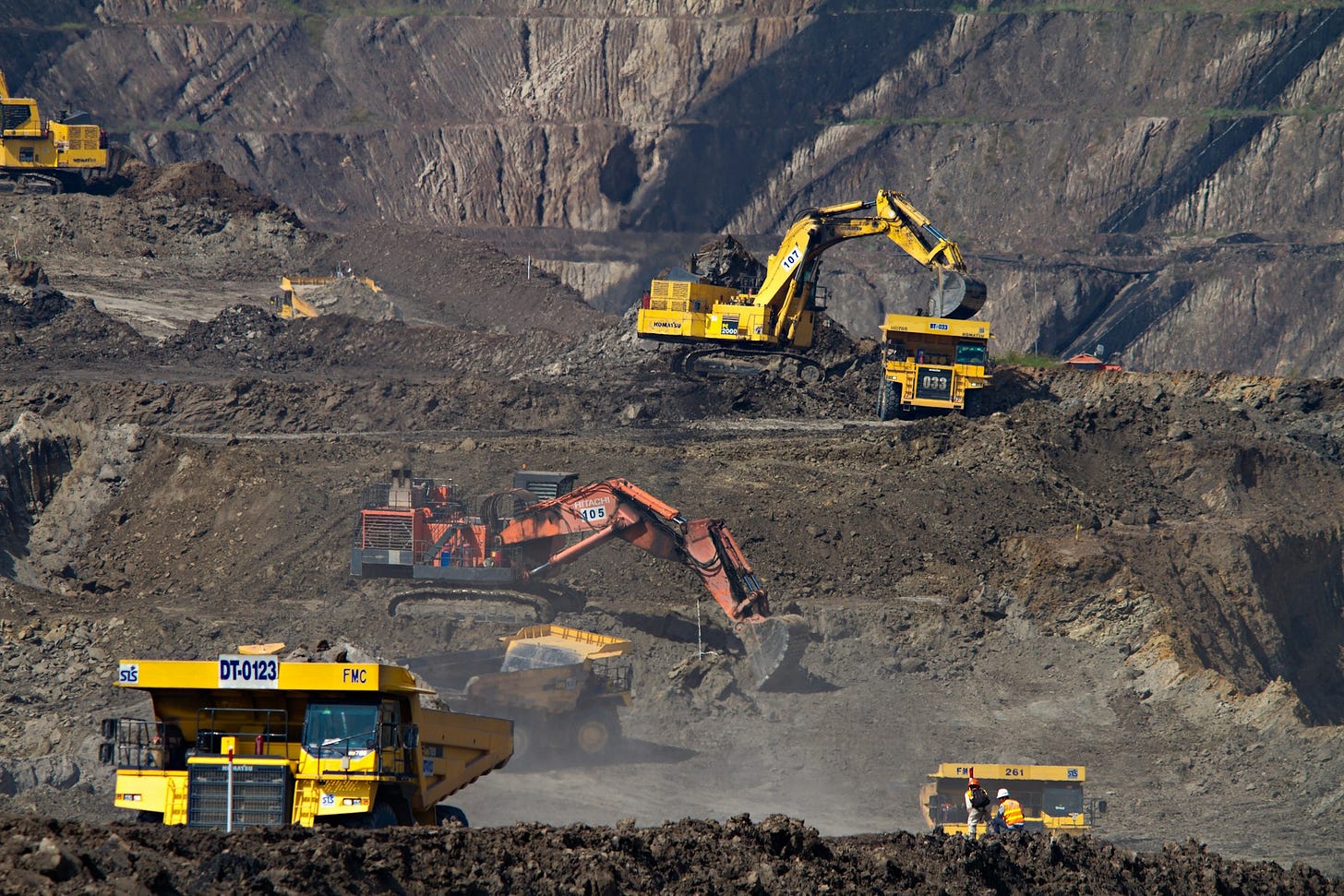
Bitcoin has none some* of that baggage. Be that as it may, I doubt that bitcoin is ever going to replace the entire global economic system with their current energy consumption. It just won’t scale.
RETRACTION: A friend of mine pointed out that without gold production, there would be no Bitcoin either. The hardware required to run the bitcoin network requires gold, copper, silver, iron, plastic etc. This hardware also needs to be upgraded every ~4th year or so, to stay competitive. This makes the environmental impact comparison even more harder to compare. I’m not saying we should stop producing computers, but it’s questionable to produce specialized hardware that for the most part is not doing anything useful for humanity, only solving arbitrary math puzzles. Shouldn’t we agree on any other coin with less environmental impact?
Conclusion
Is it a medium of exchange? No, too volatile.
Is it a store of value? No, too deflationary.
Bitcoin may have more or less failed its intention of becoming a medium of exchange. But in an unintentional twist, can still be a good investment. What is unique about bitcoin over other crypto currencies is that the coin itself is probably more worth than the underlying infrastructure. It was the first crypto currency ever invented and it demonstrated its huge potentials by saving Wikileaks. It gave birth to a whole new market that has the potential of freeing mankind.
Nobody can expect that the first version of something will last forever. Windows 95 was revolutionizing when it first came but nobody using it now. Even if bitcoins infrastructure becomes obsolete for crypto transactions, you could still port your bitcoins over to another chain, for example Hedera, that have a much better chance of standing the test of time. Let’s look 200 years into the future when the last bitcoin has been mined; even if all bitcoin mining rigs are gone, the coin can still be kept alive on a new chain, as a memory of the beginning of the crypto revolution. I can imagine that the legacy in itself will make the coin extremely valuable.



